Louis Sullivan. Frank Lloyd Wright. Daniel Burnham. Minoru Yamasaki. If the names of these American architects don’t ring a bell, their buildings definitely might. Think of the Sullivan Centre in Chicago, Fallingwater in Pennsylvania, the pointed Flatiron Building in New York City or the World Trade Centre’s Twin Towers. What many people don’t know is that the same architects who designed these iconic structures also created buildings in Buffalo, New York, making this city one of America’s best when it comes to architecture. Luckily, you don’t have to be an expert in architecture to appreciate these buildings – you can join a Buffalo architecture tour like Henk and I did, and/or create your own independent tour from this list. You’ll see for yourself the best of Buffalo’s impressive architectural heritage.
Start Your Buffalo Architecture Tour Downtown
Our Buffalo architecture tour began with a Masters of American Architecture walking tour that started at the Lafayette Hotel, constructed in 1904 in the heart of Buffalo’s downtown. When completed, the Lafayette Hotel was considered to be one of the country’s “most perfectly appointed and magnificent hotels”, offering hot and cold running water in all bathrooms, and telephones in every room.
Another fact that makes this building so unique is that its architect was a woman, Louise Blanchard Bethune, the first woman to be accepted in the American Institute of Architects in the late 19th century.
FUN FACT: Bethune was married to a Canadian architect with whom she worked at the Buffalo firm of Bethune. Bethune and & Fuchs. By the time Bethune was 33, she had already designed 79 buildings – not too shabby for any architect, let alone a woman in the late 1800s!
Not Your Typical Old Post Office
At first glance, it’s easy to mistake the Old Post Office in Buffalo for a church, especially given its 244-foot Victorian Gothic tower. Despite its ornamental exterior, the building was designed by James Knox Taylor to move mail, and it was built with definite practicality in mind. (In fact it was here that the mail chute was first invented.)
One of Taylor’s practical design ideas was to bring in plenty of natural light to the central atrium where mail was sorted, so he made the roof out of glass.
To maximize the light within the corridors off the atrium, Taylor used glazed tiles for their reflective property and installed glass archways in the corridors to keep the natural light flowing throughout the passageways.
Once the tallest building in Buffalo (until 1912), today the Old Post Office is the site of the Erie Community College city campus and its central glassed-in atrium is now a popular meeting place for students.
FUN FACT: There are sculptures of animals and gargoyles all over the exterior of the Old Post Office building, including a Buffalo head and a granite eagle that alone took over 250 hours to carve.
The Largest Office Building in the World in 1896: Ellicott Square
Next stop on our Buffalo architecture tour was Ellicott Square, designed by master architect Daniel Burnham (the man who designed New York’s Flatiron building), who is almost as famous for one of his quotations as for his architectural legacy.
“‘Make no little plans; they have no magic to stir men’s blood and probably themselves will not be realized. Make big plans; aim high in hope and work, remembering that a noble, logical diagram once recorded will never die, but long after we are gone be a living thing, asserting itself with every-growing insistency.”
Burnham certainly lived by his own words when it came to designing Ellicott Square which was the largest office building in the world when it was completed in 1896, boasting almost 300,000 square feet of office space. In fact, it was said that in Ellicott Square, you could do two days worth of business in one, because of all the services the building held (banking, insurance, shopping, etc).
But it was the decorative details of Ellicott Square that impressed Henk and I more than its size, both inside and out. On the exterior, classical details are everywhere – from the mythological figures of Nike and Hermes adorning the main entrance, to the twin pairs of elaborately carved fluted columns, and the row of Medusa heads all along the roofline.
Inside, Ellicott Square is noteworthy for its central atrium which features an inlaid compass in the mosaic floor and decorative wrought iron railings running along the mezzanine surrounding it. (Unfortunately, the interior of Ellicott Square is not open to the public, but it is possible to enter the building and look around from inside the foyer.)
FUN FACT: There are over 23 million Italian tiles inlaid in the floor of the Ellicott atrium! There’s also a statue of Mark Twain, who apparently spent some time here.
A Triangular Wedding Cake on Pearl Street
The Dun Building in Buffalo has often been called unremarkable, or a ‘wedding cake’ of a design because of its confusing mix of styles stacked like 3 ‘layers’ on top of each other. Yet this building, at 10 stories tall, was one of Buffalo’s first high-rise, steel-framed buildings when it was erected in 1895. As such, it deserves its place in the city’s architectural history.
It may not be the best or the first of any particular architectural style, but the Dun is interesting because of its efficient use of a triangular-shaped lot: it was constructed like the flatiron building in New York City, coming to a point on one corner. (Apparently, this also helps with managing wind currents coming off of Lake Erie.) Of course, you don’t realize the building’s unique shape unless you walk around it and see how dramatically it comes to a point.
St. Paul’s Episcopal Cathedral on Pearl Church
Our next stop on our Buffalo architecture tour was a little farther along Pearl Street, where we stepped into St. Paul’s Episcopal Cathedral, a National Historic Landmark and one of Buffalo’s finest 19th century churches. Built in 1851 by Ricard Upjohn, the church was almost blown to bits following a gas explosion in 1888, but its stone walls withstood the blast, and the interior was rebuilt using inspiration from 14th century church interiors.
With its stained glass windows and arched ceiling, St. Paul’s is a beautiful example of Gothic Revival architecture (and a welcome place to grab a seat and admire its interior details!)
Sullivan, the “Father of Skyscrapers” Makes His Mark
At the turn of the 20th century, Buffalo’s entrepreneurs and businessmen were keen to put their city (and themselves) on the map with construction projects that reflected the city’s thriving economy. So when oil magnate Hascal Taylor decided to build an office building at Pearl and Church streets, he sought out one of the most innovative architects of the time to design it: Louis Sullivan.
Louis Sullivan was redefining American architecture by designing revolutionary buildings that celebrated height, breaking away from exterior design based on traditional European styles. Sullivan was able to do this because of the development of steel as a cheap, versatile material that could be used as an interior skeleton to support the building’s weight. Sullivan took full advantage of this new construction material to think differently about a building’s structure and appearance, envisioning them as tall rectangular columns that seemed to be supporting the sky above. It was his vision of a building as a “proud and soaring thing” that earned Sullivan his nickname as ‘the Father of Skyscrapers’.
The Guaranty Trust Building In Buffalo was completed in 1896 and is still considered one of the most significant early skyscrapers in the United States. The 13-story structure consists of a base, piers and an attic and is clad in terra cotta which was quite decorative in its Art Deco carved details, despite Sullivan’s ‘form follows function’ credo and generally unfussy design aesthetic.
FUN FACT: The terra cotta pieces used in a recent restoration of the Guaranty Building were all made locally by a Buffalo company that makes garden pots.
Sullivan’s building never bore the name of its original financier, as Taylor died before the building was completed. Guaranty Trust took it over instead, followed by Prudential who refinanced the building two years after its construction, which is why both Guaranty and Prudential names appear on the building.
Buffalo’s M&T Bank Building: Look Familiar?
Fast forward seven decades or so from when the Guaranty Trust Building was completed, and you’ll find the M&T Bank Tower, a 21-story building that was designed by Minoru Yamasaki in 1966. If the style of this 21-story building definitely seems familiar, it’s because seven years later, Yamasaki designed two of America’s most famous skyscrapers: the World Trade Centre’s twin towers. Sadly, those buildings will live forever in American history for all the wrong reasons, so perhaps it was fortunate that Yamasaki did not live to see his towers fall.
Frank Lloyd Wright’s Buffalo
No visit to explore Buffalo’s architecture is complete without seeing Frank Lloyd Wright’s buildings (in fact, it was our desire to visit the recently restored Darwin Martin House that had brought Henk and I to the city in the first place). What we learned during our visit is that Frank Lloyd Wright played a huge role in putting Buffalo on the ‘architectural map’ – and vice versa – as this is where Wright found both a client and a friend in local entrepreneur Darwin Martin. Martin’s patronage helped establish Wright’s reputation as a visionary architect, in both commercial and residential design.
The Innovative Larkin Building
In 1903, Martin proposed Frank Lloyd Wright as the architect for a new office building for the Larkin Soap Company, where Martin served as an executive. It was a huge commission that allowed Wright to incorporate innovative elements never before used in commercial buildings such as air conditioning, built-in desks, and a 78-foot tall central atrium with a skylit roof that allowed for natural light to illuminate all the interior floors.
FUN FACT: The Larkin Building was also where Frank Lloyd Wright first designed washroom stalls with off-the-floor partitions and toilets, in order to make the floors easier to clean.
Sadly, the Larkin Building did not survive the wrecking ball of the 1950s, and nothing remains of this building today.
However, there is another example of Frank Lloyd Wright’s commercial designs that has been rebuilt nearby: a filling station from 1927. Strangely, you won’t find this gas station on the corner of Michigan and Cherry where it was originally envisioned; instead, you’ll find it inside the Pierce Arrow Museum.
Frank Lloyd Wright’s Filling Station, Re-Incarnated
Automobile history and architectural history come together in Buffalo’s Pierce Arrow Museum, a labour of love for owner and automobile collector Jim Sandoro, who along with his wife Mary Ann, have spent over 45 years amassing an impressive collection of automobile memorabilia, antique vehicles and artefacts.
It was during these years of research and sourcing vehicles that Sandoro learned that Frank Lloyd Wright had designed a filling station in 1927 for Buffalo that had never been built. Keen to learn more, Sandoro travelled to Scottsdale, Arizona (where Wright operated his Taliesin West architectural school) to do more research, and it was here that Sandoro found Wright’s original drawings for the gas station.
Excited at the prospect of ‘building’ Frank Lloyd Wright’s original design, Sandoro paid $175,000 for the rights to construct the filling station inside his museum and began its construction in 2002. This is where you will find the copper-clad station today, complete with two 45-foot ‘totem’ towers and neon TYDOL sign above.
The filling station is unlike any gas station you’ve seen, with a futuristic design that is more Jetson that Roaring Twenties. However, there were some questionable elements when it comes to safety in Wright’s design: the waiting areas inside the structure were designed with working fireplaces, and the gas reservoir was located on the roof above them, also not far from those ‘lightning rod’ totems! I’m not sure I would have wanted to spend too much time here, especially in a thunderstorm.
But this departure from the norm makes this gas station as unmistakably Frank Lloyd Wright as the lamps which he designed and that Sandoro recreated in his replica.
Regardless of the safety issues, it is very cool to see an unrealized Wright design brought to life 90+ years after it was first imagined!
The Darwin Martin House: Frank Lloyd Wright’s Opus
Along with his commercial work for Darwin Martin’s Buffalo-based company, Frank Lloyd Wright designed two notable residential properties for Martin’s family here as well. The first was the principle residence for the Martin family, Darwin Martin House, which deserves an entire article to do justice to it.
Considered by many (including Wright himself) to be the finest example of Wright’s signature ‘Prairie-style’ home, the Darwin Martin house exemplifies a new vision in architecture, one that was original and distinctly American. Which might just be the most important legacy for any architect.
Graycliff Estate: Reining in Frank Lloyd Wright
When Darwin Martin gave Frank Lloyd Wright the go-ahead to design Graycliff, their country estate on a cliff overlooking Lake Erie, he did so under one condition: that Wright defer to the wishes of Darwin’s wife, Isabelle, when it came to the house’s design.
Isabelle was severely visually impaired, and found living in the Darwin Martin house in Buffalo very difficult: its low profile, large overhanging eaves and stained glass windows made it too dark a house for her liking. So when Wright was assigned to design the Graycliff house, Isabelle insisted on it being light-filled, open and airy. Wright was in no position to argue, being almost broke, so he did listen to his client, for once.
Which is why, when you visit GrayCliff, about 15 minutes’ drive south of Buffalo, you may find the house more ‘traditional’ than many of Wright’s other designs. What is consistent, however, is the way that Wright tried to take advantage of the physical location of the house, by using stone to mimic the grey cliff on which it was built, and keeping the focus on the amazing lake views.
FUN FACT: The limestone of the bluff on which Graycliff is built creates shapes like diamonds and hearts as it erodes. Wright incorporated these shapes in the house, designing diamond-shaped windows and using the heart-shaped rocks in the stone fireplace and elsewhere.
TIP: Graycliff is about a 15 minute drive south of Buffalo in the small town of Derby. The most convenient way to get there is by car but Uber is available as well.
Buffalo’s Architecture: Much More than Bricks and Mortar
Architecture geeks and design aficionados are probably well aware of Buffalo’s connection to the “Father of Skyscrapers” and chances are they can name the architect of the Twin Towers without having to Google it. But for Henk and I, it came as a surprise to learn just how many significant examples of American architecture are found in Buffalo. More importantly, with every building we discovered, we learned more about the city’s history, its economic ups and downs, some unusual claims to fame, and a glimpse into the daily lives of the people who lived and worked here.
Not bad for a bunch of bricks and mortar.
Special thanks to Visit Buffalo Niagara tourism who hosted Henk and I on our architecture tour of the city.

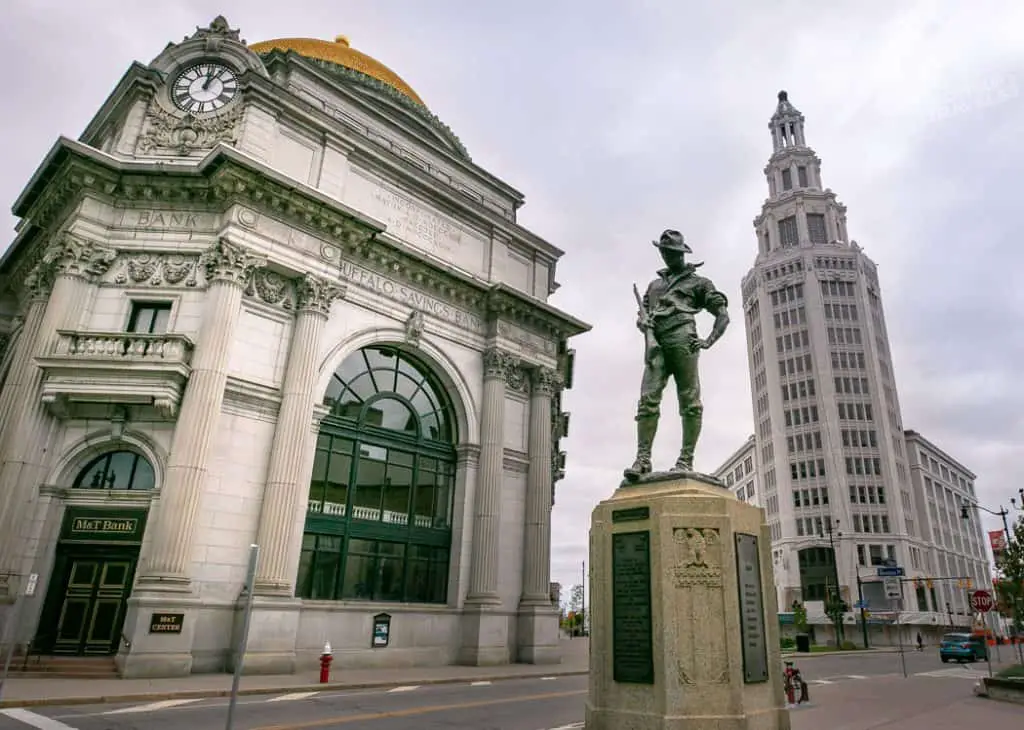
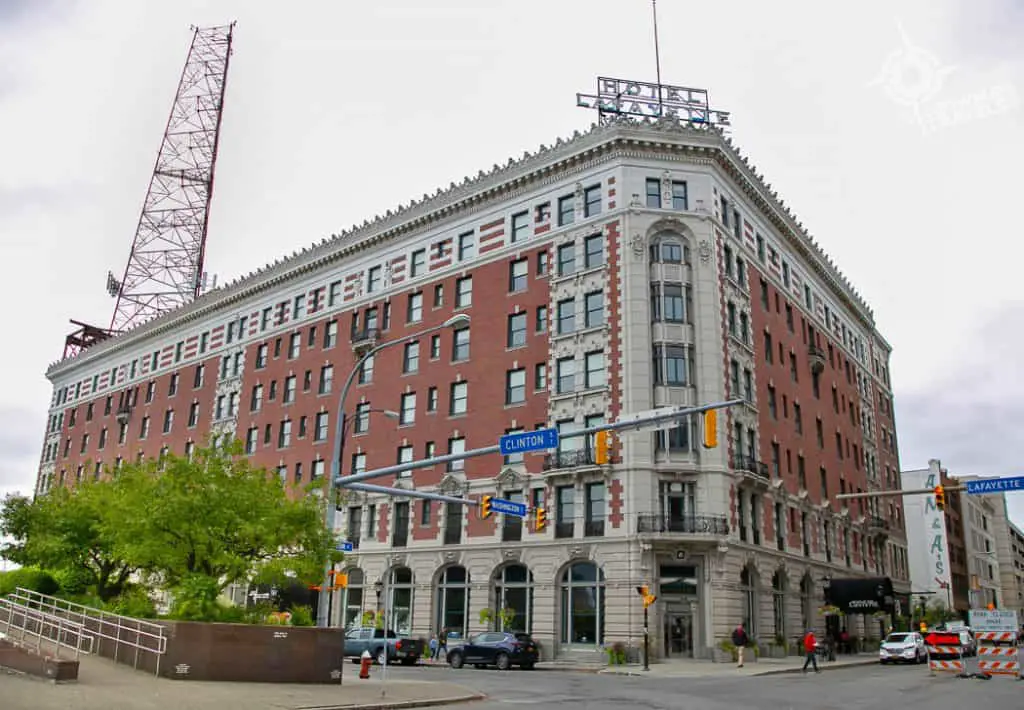

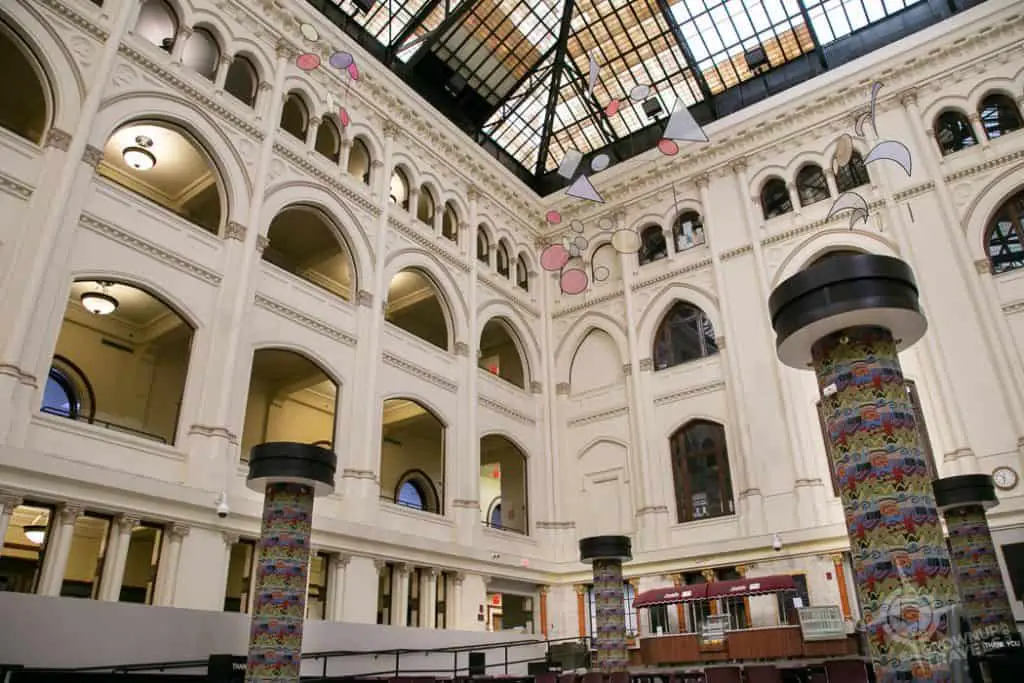

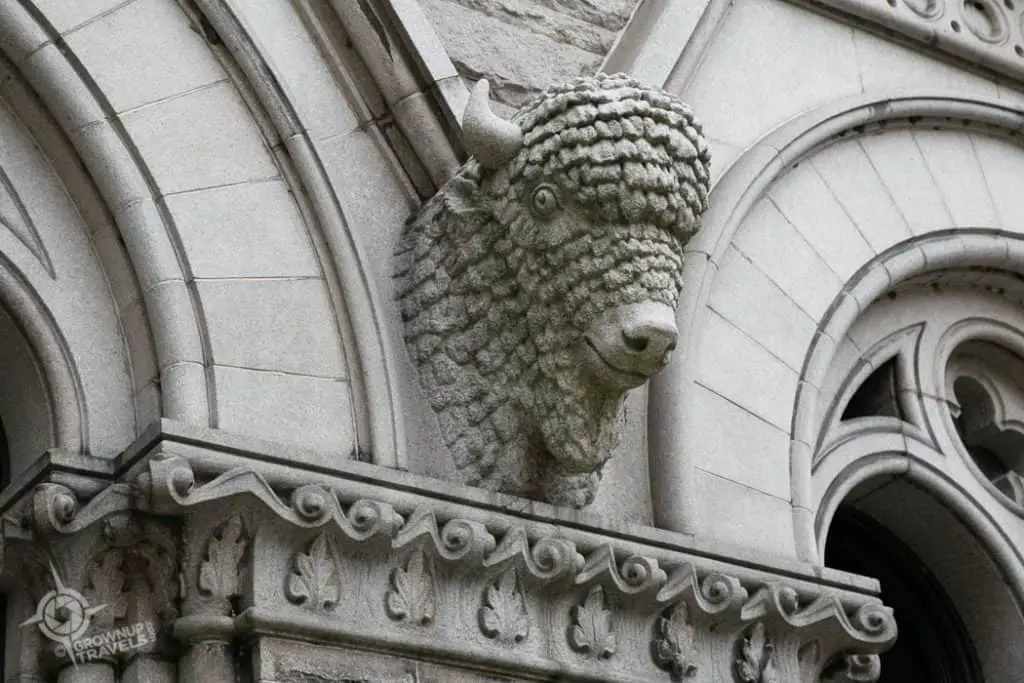



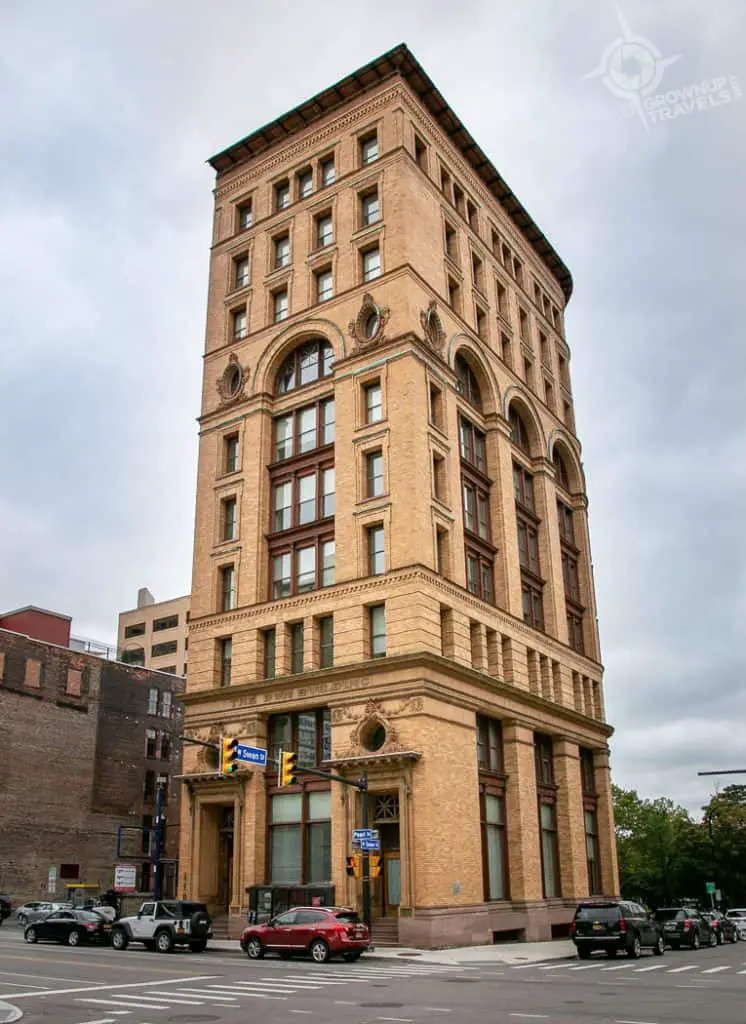
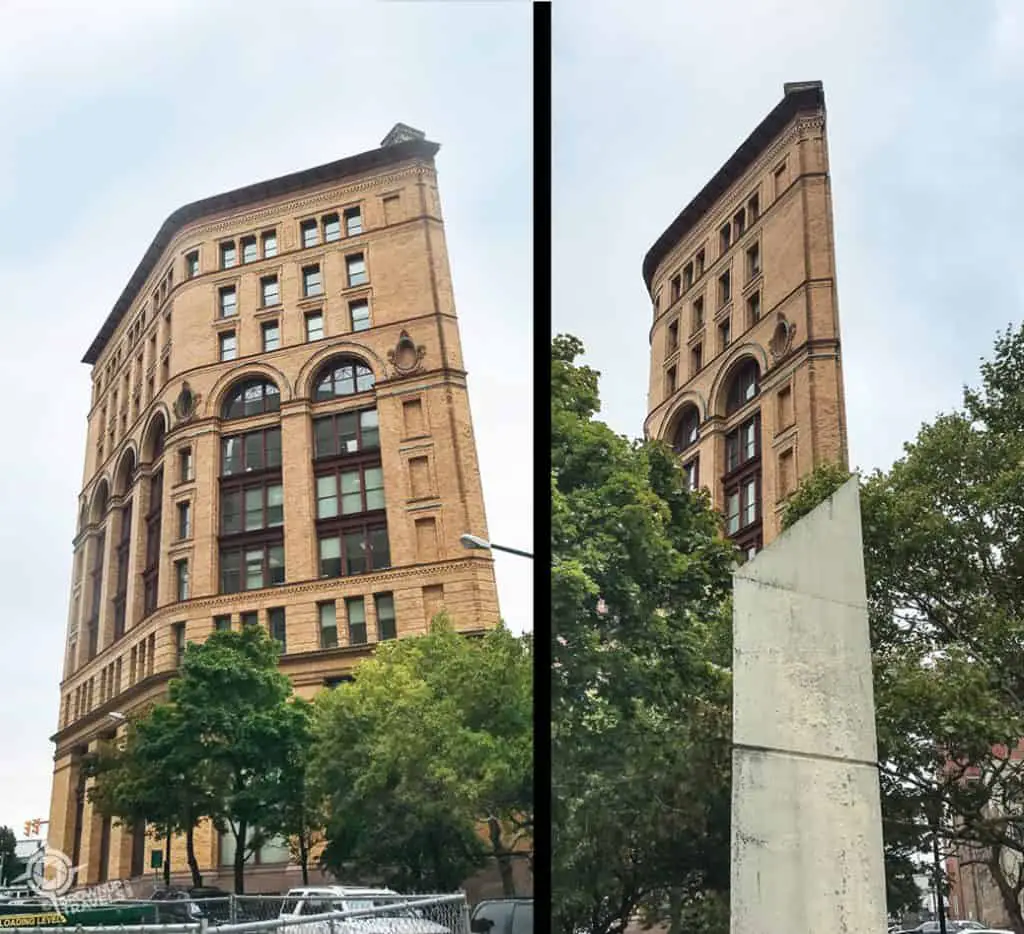
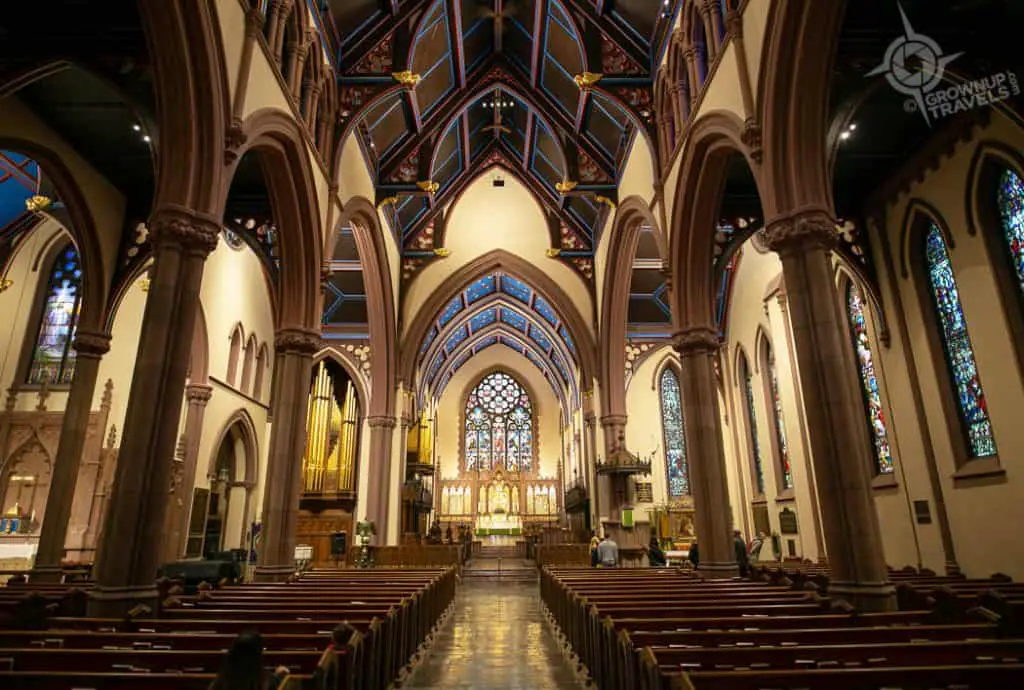
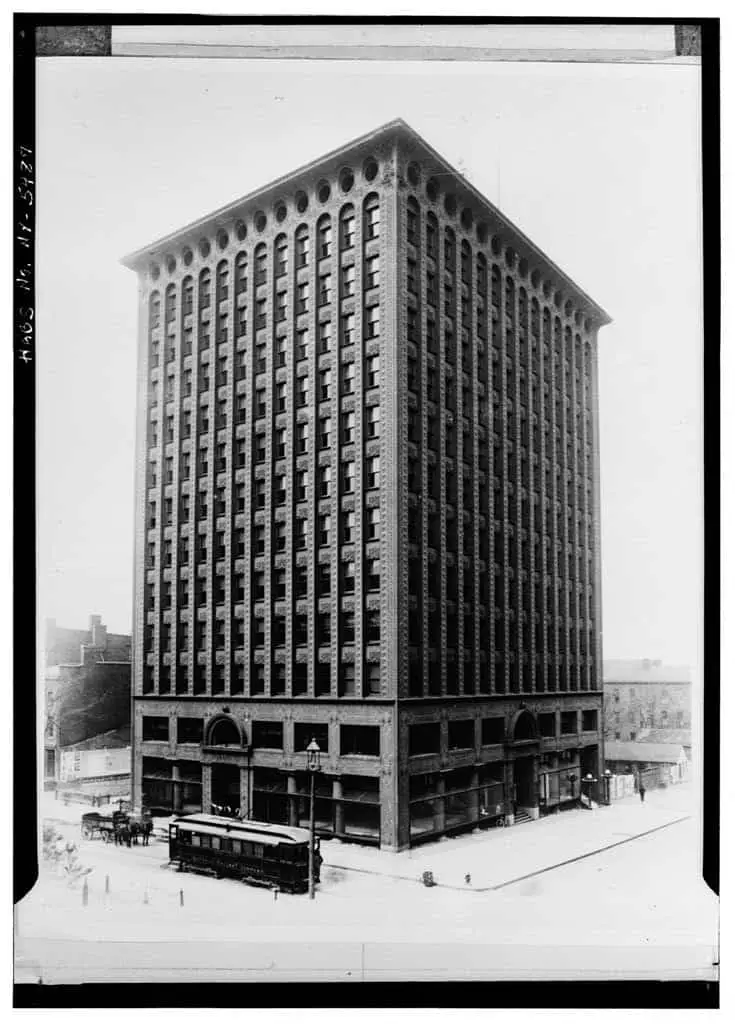

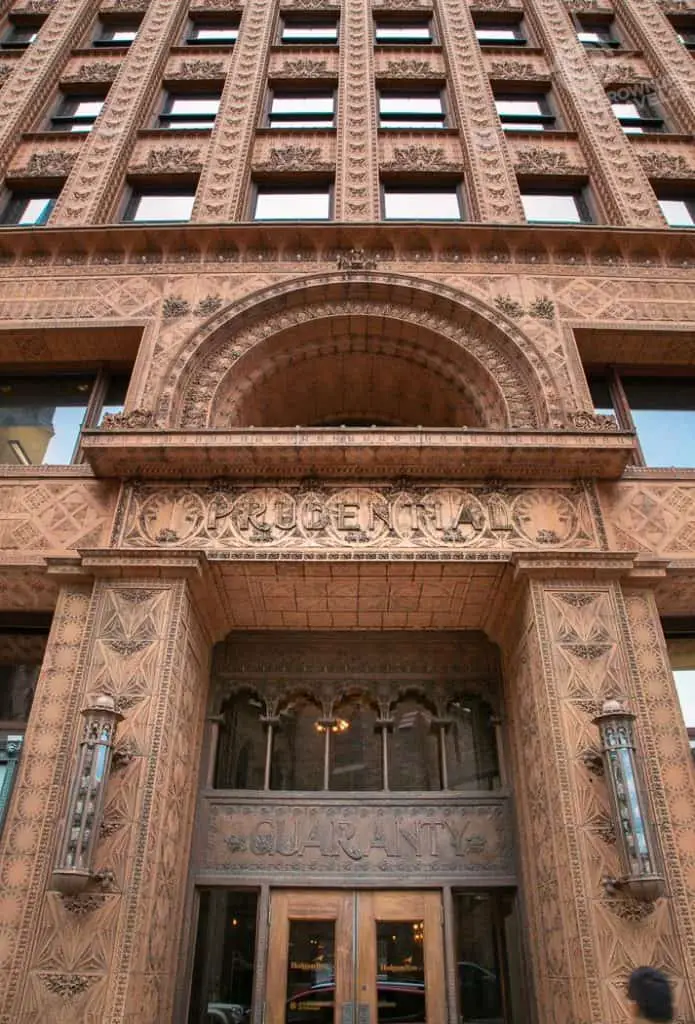
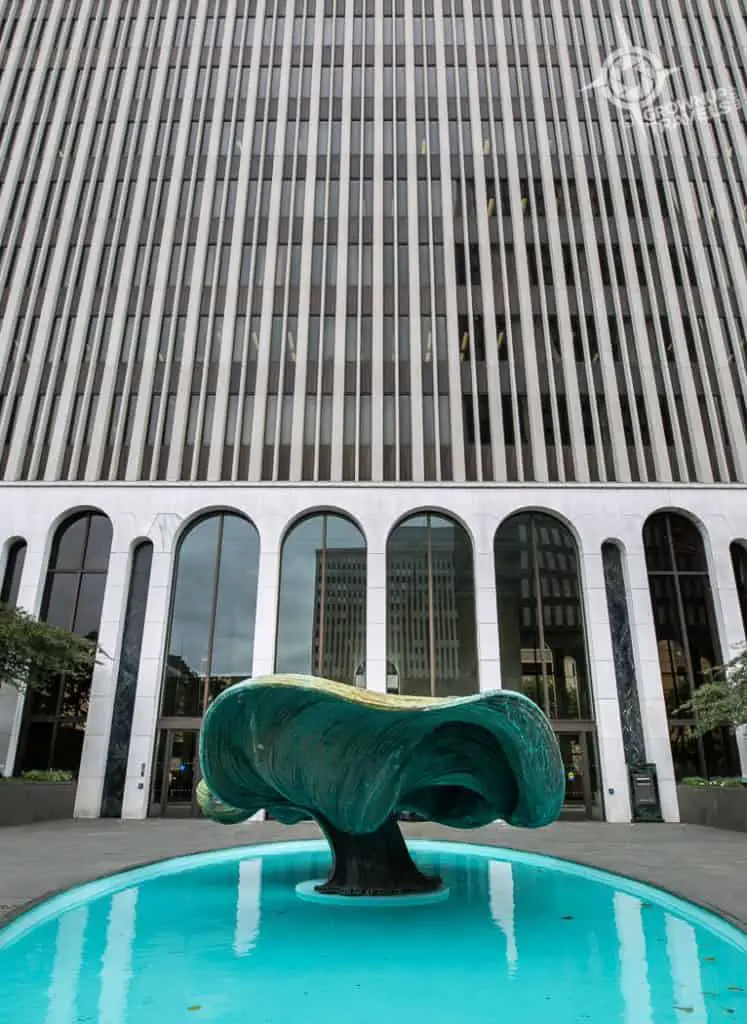


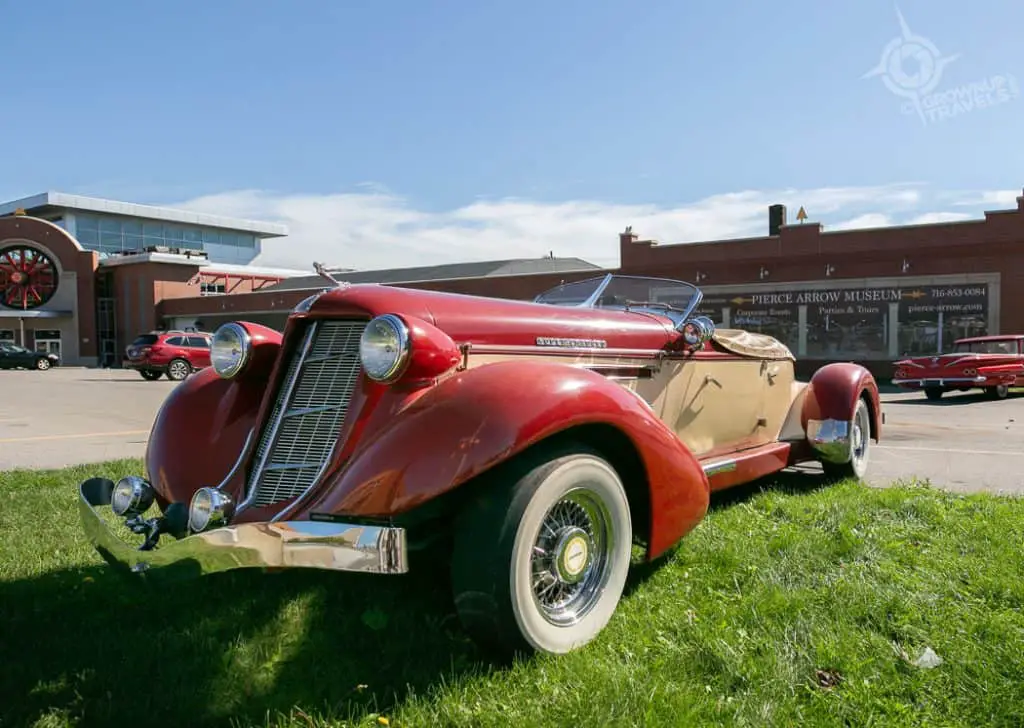

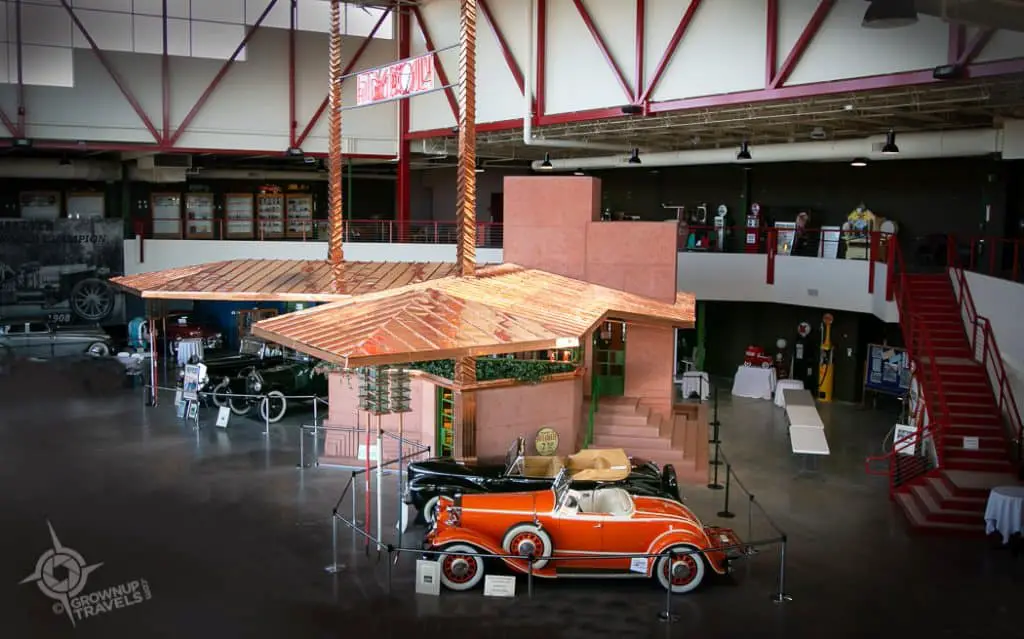


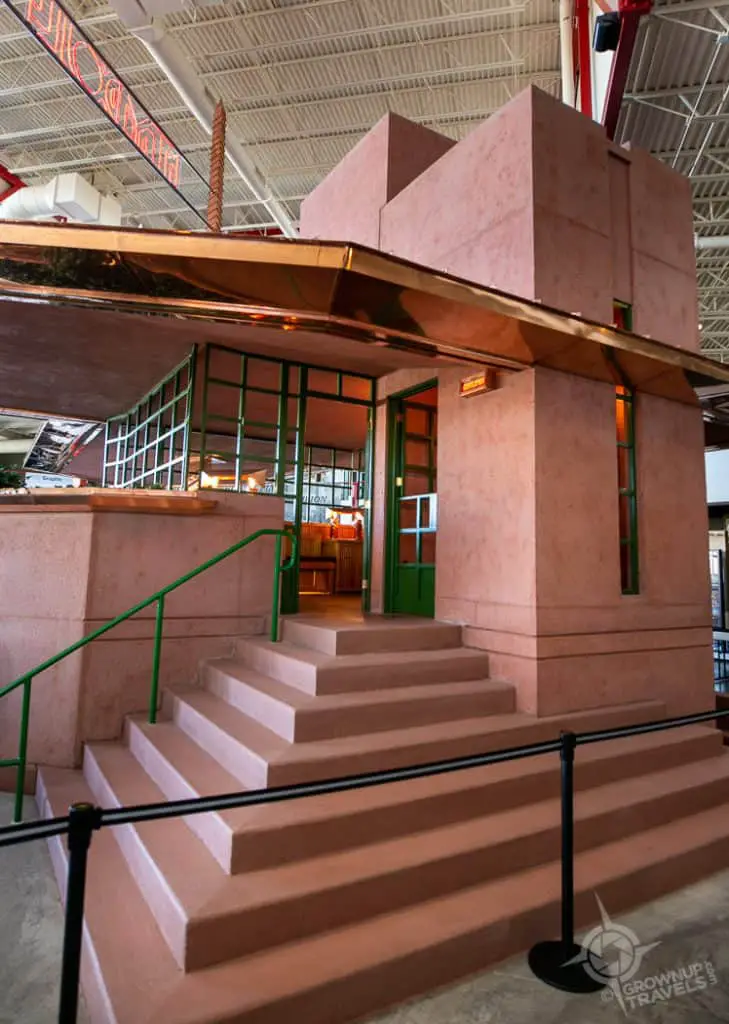
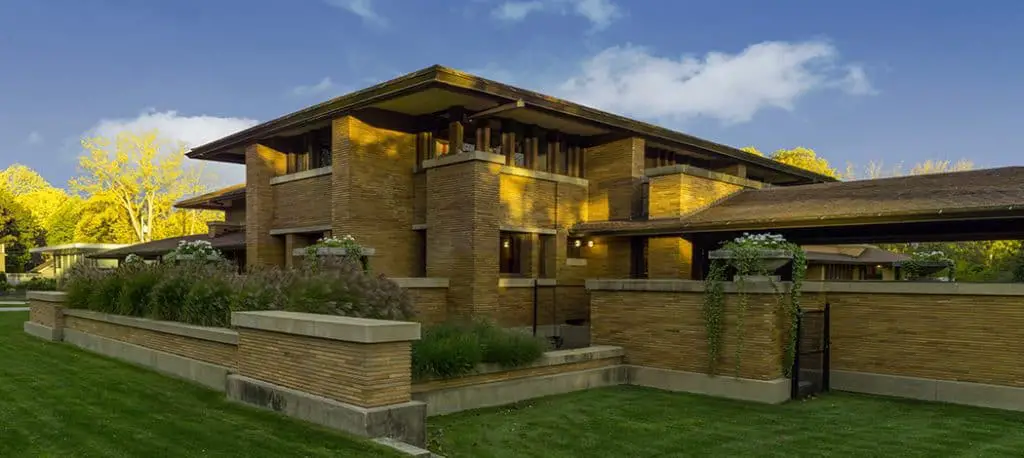

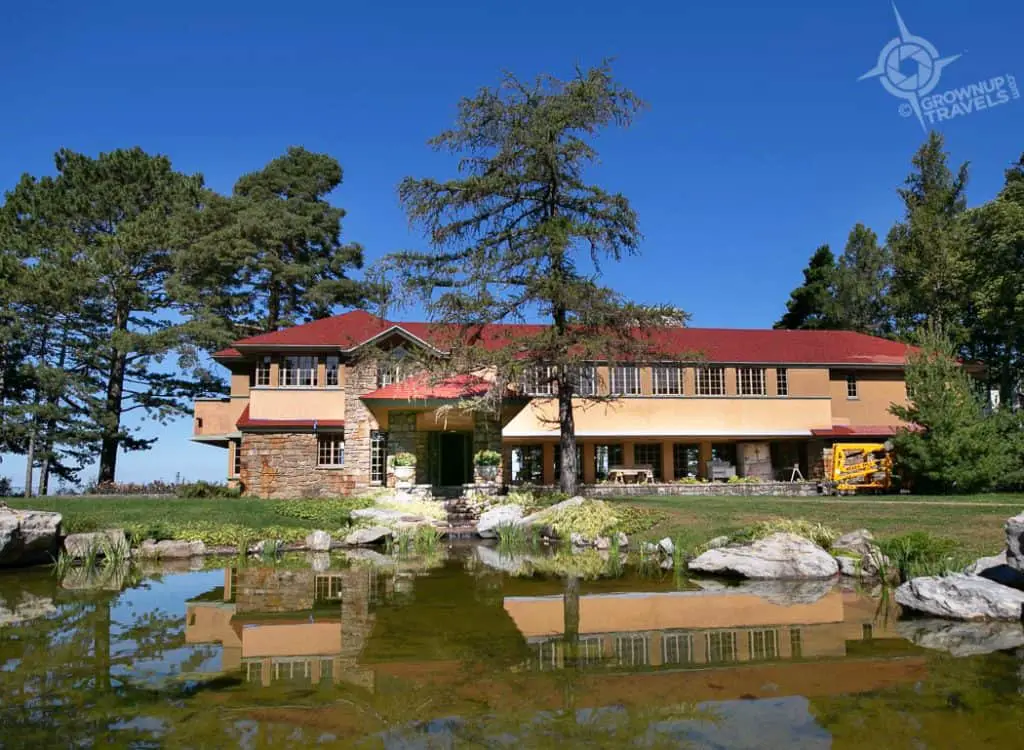

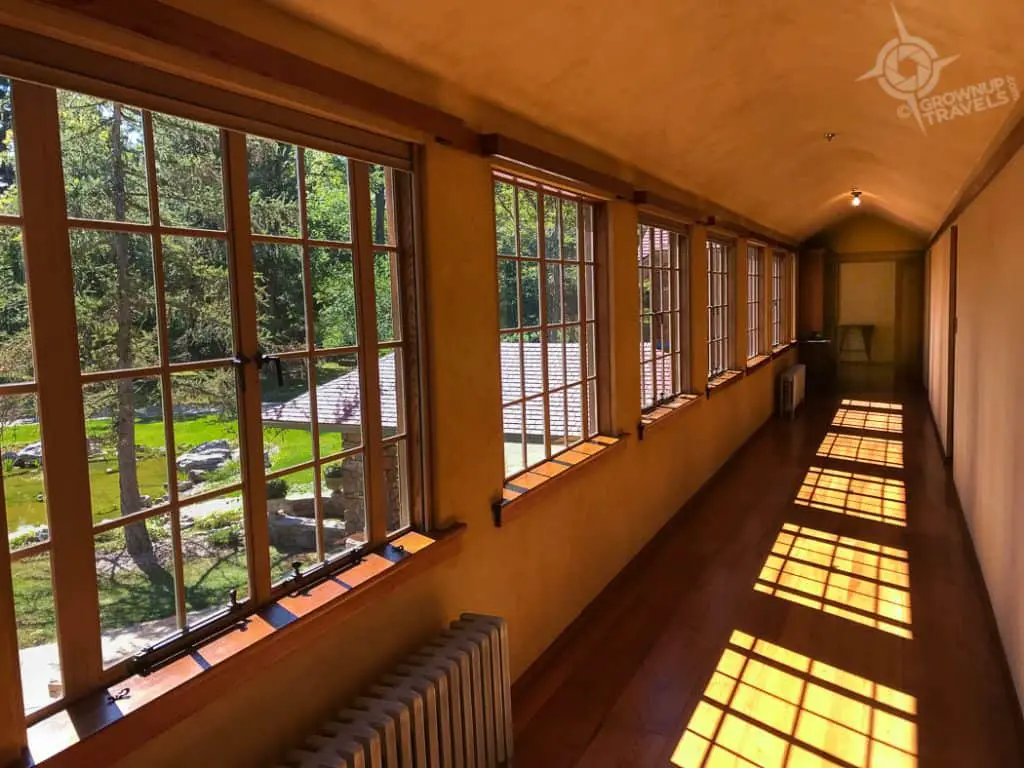

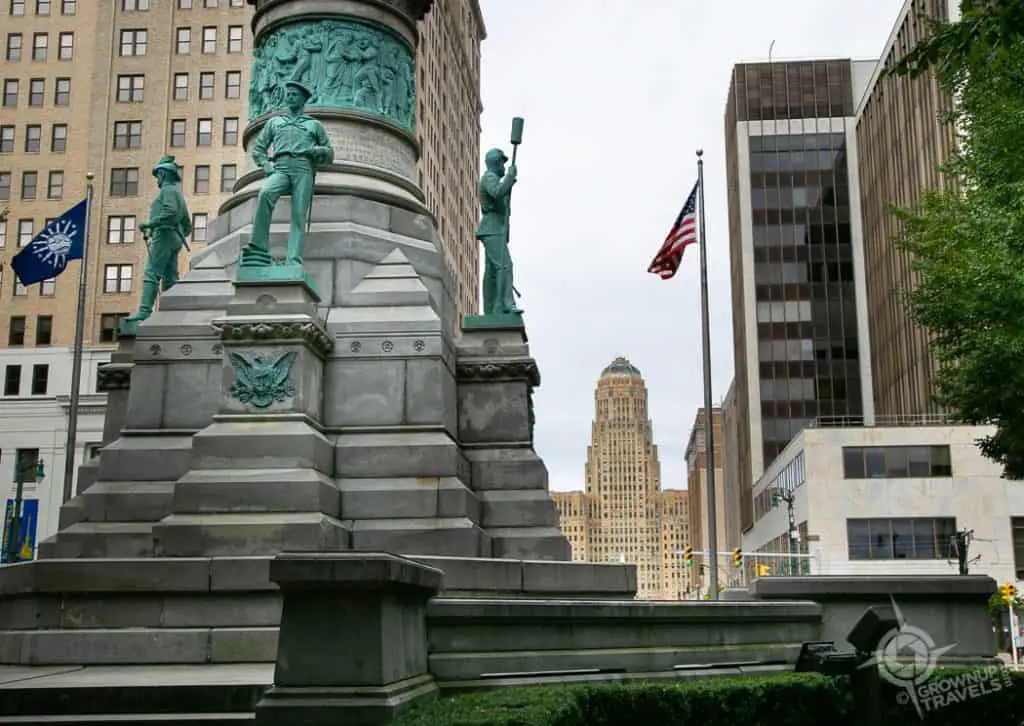


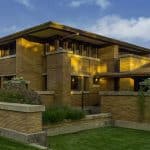


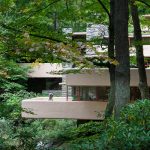






How about Kleinhans Music Hall, by Saarinen and son?
A great addition, Marcia. Its design is surprisingly ‘modern’ considering it was built in 1940 (a Saarinen characteristic of course) – and I understand the Hall is considered to be one of the most acoustically perfect concert venues in the world.
Thanks for letting me know. We’ll have to visit it next time we get to Buffalo. (who knows, maybe when we are able to go to concerts again!)